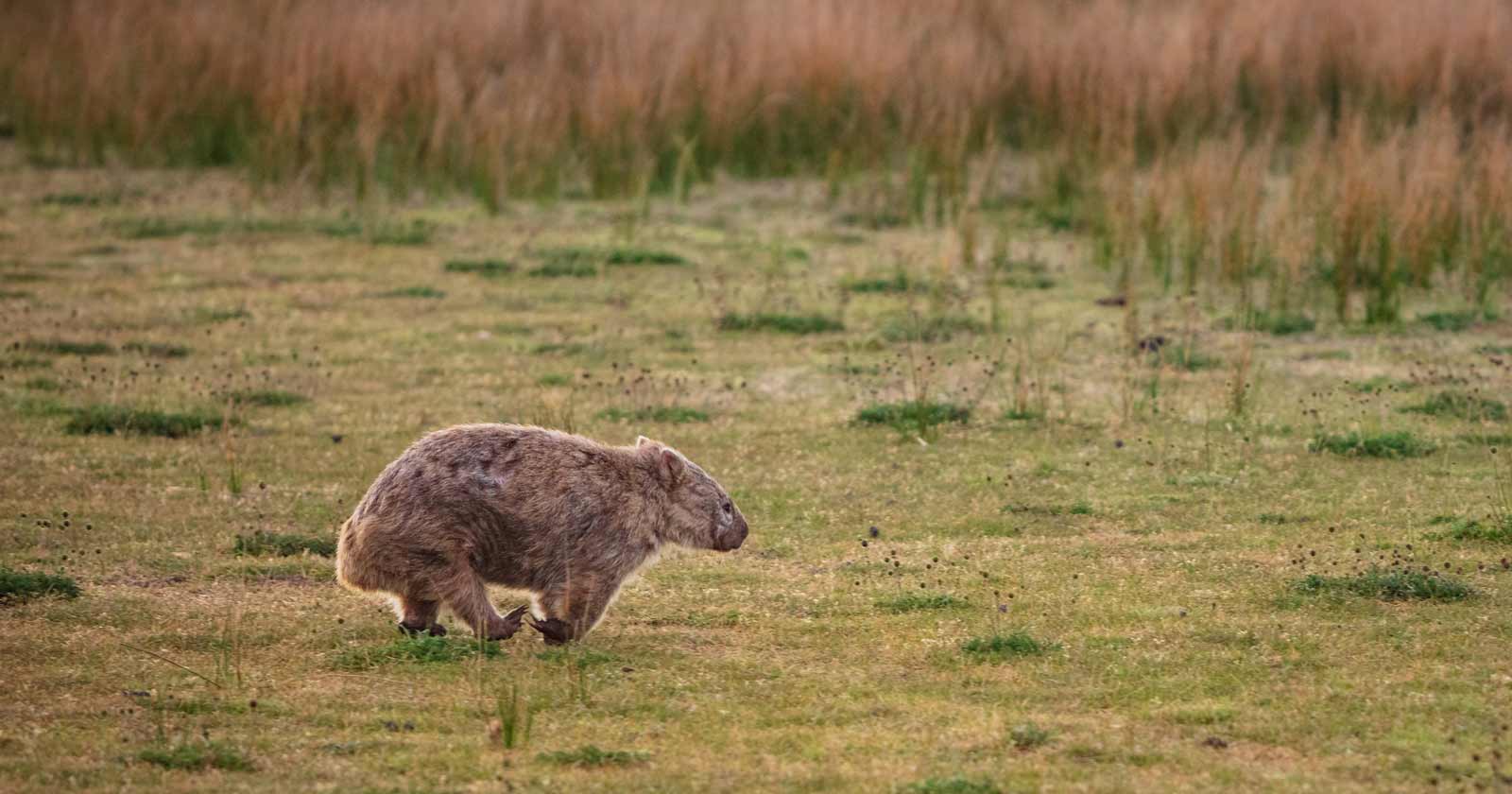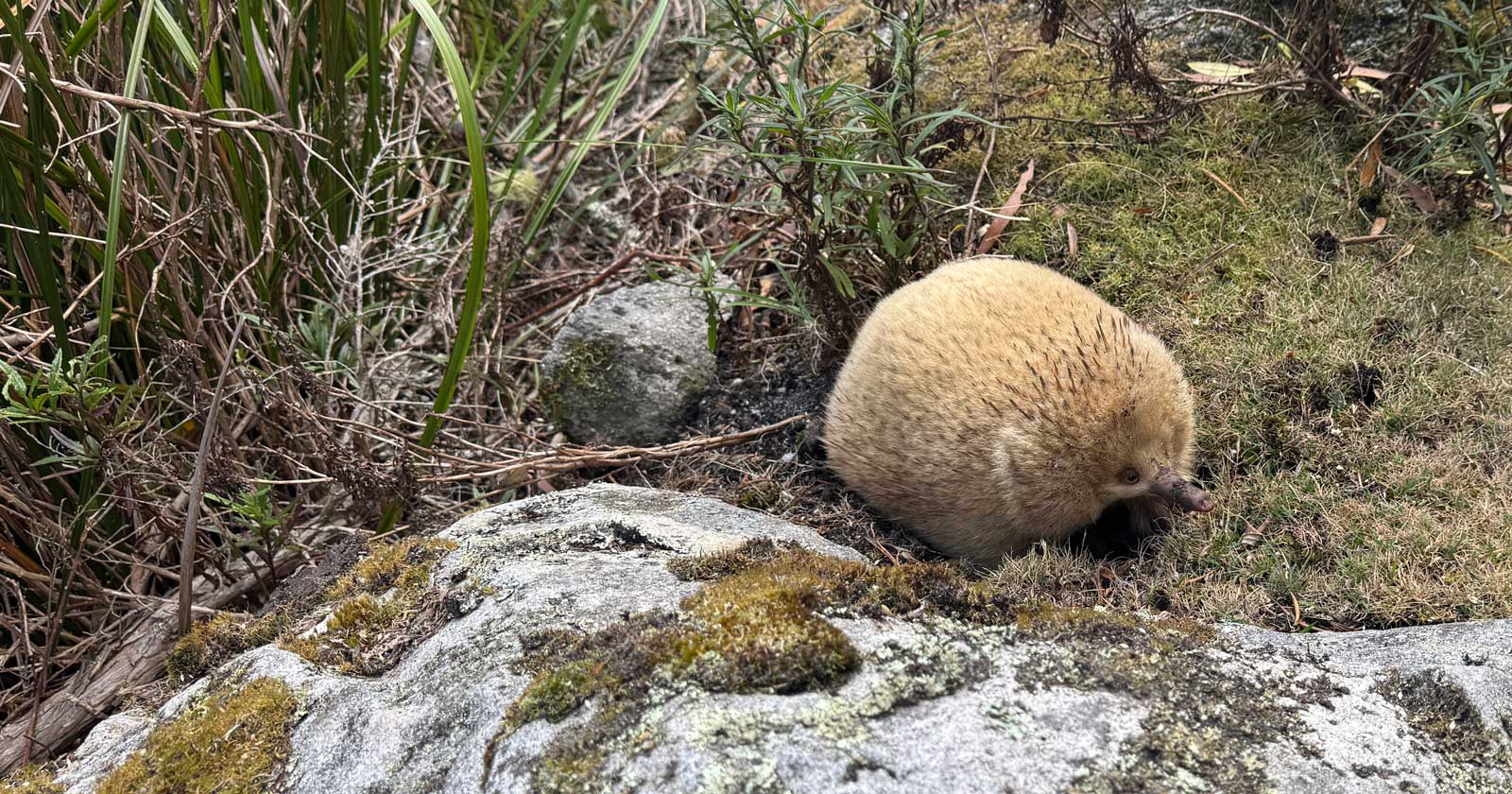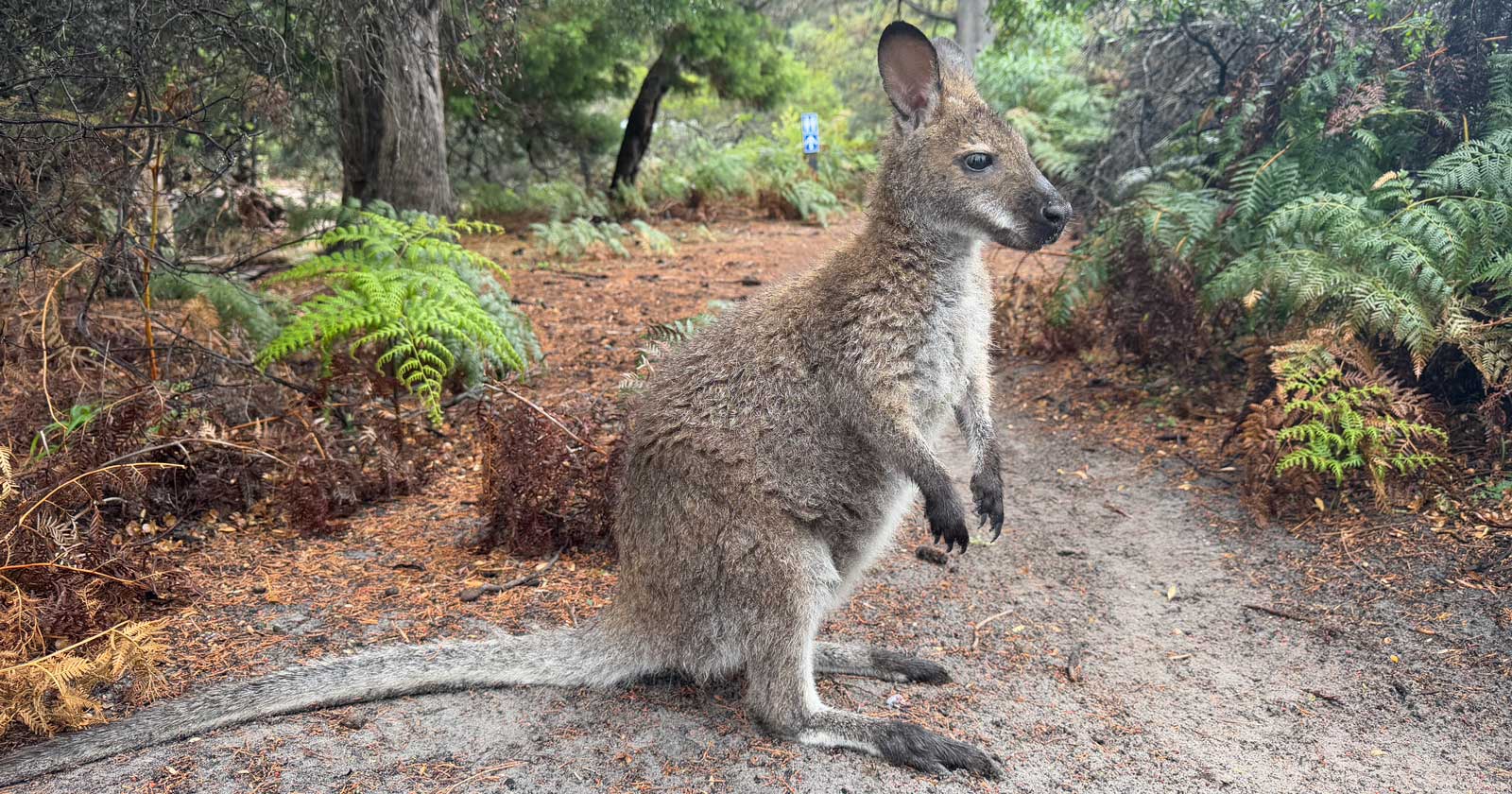Why You Should Never Interfere with Australian Wildlife (Regardless of How Cute They Look)
Australia’s wildlife is unique, diverse, and—let’s be honest—sometimes irresistibly cute. From fluffy koalas to waddling wombats, it’s easy to see why people are tempted to get up close, take a selfie, or even pick them up for a better look.
But no matter how adorable they seem, wild animals are not pets, props, or playthings. Recently, an American influencer sparked outrage after picking up a baby wombat simply because she wanted to. The mother wombat was visibly distressed, and experts have warned that such actions can seriously harm both the animal and the person involved.

A Recent Incident Sparks Outrage
There has been significant media coverage (The Guardian, News.com.au) about Sam Jones, an American influencer and self-proclaimed wildlife biologist, who posted a now-deleted video of herself picking up a baby wombat from its mother on an Australian roadside. Laughing as she carried the distressed joey, she ignored the mother wombat, which frantically chased after her.
The backlash was swift. Wildlife experts condemned the act, pointing out the distress and potential harm caused to the animal. Her social media accounts were soon made private or deactivated, and she reportedly left the country amid calls for her visa to be revoked (News.com.au, 9News).
Under Australian law, interfering with native wildlife is illegal and can result in substantial fines or imprisonment.
While this incident made headlines, similar interactions happen far too often—sometimes with tragic consequences.

The Harm of Human Interference
Even if an animal seems calm or friendly, human interaction can cause significant harm.
1. Wildlife Is Not Here for Your Entertainment
Wild animals exist in their natural habitat for a reason. They’re not meant to be handled, cuddled, or used for social media content.
Even if an animal:
- Looks friendly – Many are naturally curious but don’t want to be touched.
- Doesn’t run away – Some rely on stillness as a defense mechanism, which doesn’t mean they’re comfortable.
- Seems harmless – Many Australian animals have sharp claws, strong bites, or carry diseases.
Zoos and sanctuaries provide controlled interactions, but in the wild, animals should always be left alone.
2. Picking Up Wildlife Can Be Deadly
Even well-meaning actions can cause harm:
- Stress and fear – Being picked up can trigger panic, leading to injury or even death from shock.
- Separation from their mother – Many young animals, like wombats and kangaroos, depend on their mothers for survival. If separated, they may struggle to find food or shelter.
- Physical injury – Mishandling an animal can result in broken bones, internal injuries, or suffocation.
In the influencer’s case, removing the joey from its mother was more than just reckless—it put the animal’s life at risk for the sake of a video.
3. Feeding Wildlife Causes More Harm Than Good
Offering food to wild animals might seem like an act of kindness, but it can have devastating effects.
Why feeding wildlife is a bad idea:
- Unnatural diet – Human food lacks the proper nutrients and can cause malnutrition, disease, or deformities (e.g., “angel wing” in birds from eating bread).
- Dependency on humans – Animals that rely on handouts lose their natural foraging skills, making survival harder.
- Aggressive behavior – Animals that associate humans with food can become territorial or dangerous.
- Disrupts ecosystems – Feeding one species can upset natural balances, attracting predators or causing overpopulation.
- Spreads disease – Leftover food and frequent human interaction can introduce bacteria and viruses.
Even natural foods like fruit or nuts can be harmful, as wild animals have specific dietary needs.
4. It’s Dangerous for You, Too
Many assume that if an animal looks cute, it must be safe to handle. In reality, Australian wildlife can be surprisingly strong, defensive, and even aggressive if they feel threatened.
Animals that may look harmless but can cause injury include:
- Wombats – They may seem like big teddy bears, but they have powerful claws and can run at high speeds. If threatened, they can bite, scratch, or even knock you over.
- Koalas – Their sharp claws can cause deep wounds, and they can bite if frightened. They also carry bacteria that can cause infections.
- Kangaroos – They can kick with enough force to break bones.
Even if an animal doesn’t bite or scratch, many carry bacteria or diseases that can be transmitted to humans.
5. It’s Illegal
Australia has strict laws protecting native wildlife, and interfering with animals—whether by handling, feeding, or removing them from their habitat—can result in serious legal consequences.
Under Australian law, it is illegal to harass, disturb, or take native wildlife without proper permits. Penalties vary by state but can include:
- Fines exceeding $10,000 for unlawfully handling or disturbing protected species.
- Imprisonment in severe cases, especially if the interference results in harm to the animal.
- Additional penalties for social media posts that encourage illegal interactions with wildlife.
For example:
- Victoria – Feeding or disturbing wildlife in national parks is prohibited under the National Parks Act 1975. Fines can reach thousands of dollars.
- Queensland – Handling, keeping, or feeding protected animals without authorization can result in penalties exceeding $10,000 under the Nature Conservation Act 1992.
- New South Wales – Under the Biodiversity Conservation Act 2016, disturbing native animals without approval can lead to significant fines and legal action.
While a tourist picking up a baby wombat might seem harmless, it’s a serious offense under these laws—designed to protect both wildlife and people.

What You Should Do Instead
If you see wildlife while hiking or traveling, the best thing to do is admire from a distance. Here’s how to responsibly interact with nature:
- Observe without touching – Take photos from a distance, but never try to pick up or feed an animal.
- Respect their space – If an animal seems curious, let it come closer on its own terms, but never force interaction.
- Help wildlife safely (if necessary) – If you spot an animal like a lizard, echidna, or wombat on the road, you can try to encourage it to move to safety without touching it. Use gentle noises, slow movements, or stand at a safe distance to direct traffic if needed. Never put yourself in danger, and avoid interfering if the animal seems capable of moving on its own.
- Report injured wildlife – If you see an animal that appears to be in distress, contact a licensed wildlife rescue organisation, such as:
- WIRES (Australia’s largest wildlife rescue organisation): 1300 094 737 (wires.org.au)
- Wildlife Rescue Australia: 1300 596 457 (wildliferescue.net.au)
By respecting wildlife and keeping your distance, you help ensure that animals stay wild, safe, and healthy.
Observe, don’t touch, and don’t feed
Australia’s wildlife is not here for human entertainment. While it might be tempting to pick up a cute animal for a photo or feed one to get closer, doing so can harm the animal, put you at risk, and even get you in legal trouble.
While many people think of koalas and wombats when they imagine Australian wildlife, the country is also home to creatures that command even greater caution. Australia is also home to venomous snakes, spiders, and powerful crocodiles—animals that demand respect and caution. To stay safe on your hikes, check out my guide on Australian wildlife to avoid and how to handle encounters the right way.
Australia’s wildlife is incredible—so let’s keep it that way. Observe from a distance, respect their space, and never interfere. Let them be wild, as nature intended and always Leave No Trace! It’s the best way to protect nature for future generations to enjoy.
References:



As tempting as it can be to want to get close to wildlife, it’s really important to always keep your distance and let them be Wild.
Last night I interfered with wildlife – a wombat. (It’s okay – happy ending ahead.)
When I went out with the dog into the dog yard for a final night wee, one of our wombats had wandered close to the fence, so I took a look, chiding Tui for pretending to growl it through the wire. Then I saw the mange.
This really sucks. When it gets bad, the wombat is going to to die a slow and painful death. 90% of our wombats are mange free, but that 10% are distressing to see, and incredibly difficult – and even more expensive – to treat. But we’d been gifted several treatments – normally used on dogs, and about $100 each for a tiny tube. So I said I’d try and apply it.
To apply the contents of the tube, you simply twist the top – but don’t take it off, then put the tip deep into the fur from the neck to the tail bone and squeeze the liquid out onto the skin. Oh, yeah, first you have to get within arm’s reach of a wild animal that doesn’t want to be anywhere near you. At night. Using a flickering head torch.
Too easy, right? Picture me as a mime, mimicking creeping up on a big male wombat, looking like a right dick, taking about ten minutes to cross the last two metres, stopping every time the wombat paused, clearly aware something’s amiss. At any moment, he can just bolt, leaving me standing there – Marcel Marceau minus the makeup – poised with one foot still in the air, one arm ready with the tiny tube.
The last half metre, needing two steps to be absolutely sure I can properly and effectively get that stuff deep in the fur and on the skin, are excruciating. All the time I’m thinking, even if it doesn’t run if I crunch on a stick, won’t it bolt when it feels me touching its fur, and then its skin? Will $100 of meds end up squirted uselessly into thin air?
I made the final step, leaned over, then slowly lowered my arm down, the tip of the tube poised, slowly touching it to the outer fur, then slid it deep into the fur and all the way down to the neck. Then I started squeezing and slid that sucker – even as the poor wombat turned and growled me – all the way along the spine down to the rear end. Yes! Done! Brilliant!
Feeling like I’d really cared for country, I backed off, apologising for disturbing the poor fella, clearly unwell and confused by the whole mime thing. Fair call, I thought.
So, happy ending. Wombat annoyed but saved. If anyone has an spare treatments for mange to donate to our valley (we share treatments as needed), please DM me!
Ben Marshall What an incredible effort to help that wombat! What dedication and patience in that story, especially with the challenge of getting so close to a wild animal. It’s great to hear you managed to treat it and give it a better chance at recovery. I hope the treatment helps, and fingers crossed more people will be able to donate supplies to support your work. Thanks for sharing this beautiful story of wildlife care!
No worries! We are both blessed and cursed to have the privilege of caring for country here in Tasmania – lucky to live in wilderness, but doomed to be forever fighting to stop it being bulldozed. [shrug]. You just do what you can, right?
Ben Marshall it’s all any of us can do. If everyone plays a small part to protect and conserve our wilderness, then collectively we can make a difference. It’s easy to feel helpless when we step back and look at the big picture, but you helped that one wombat, and that’s what it takes. One small but meaningful action at a time.
Samantha Strable read this
I think here in Western Australia it’s the Biodiversity Conservation Regulations 2018 (as part of the Biodiversity Conservation Act 2016) which stipulates what you can and can’t do and penalties. I think that a lot of it is people know you can’t – but not so much awareness of what the regulations are. Quite a few people still believe they can get close to wildlife as well when there might actually be a separation distance requirement (eg whales). Regarding our position in Western Austrralia – the Turtle Code of Conduct also applies which isn’t actually in the Biodiversity Conservation Regulations 2018.
Michael Goh these are all very good points. Seems like a lot more education is needed.
Thing is. Why would u I’m the first place? These idiots wouldn’t interfere with our crocs, snakes, dingos and spiders so why even think about touching them. I don’t get it….
Karen Jane Hawkins I think a lot of people don’t spend as much time in nature as we all do so they may not understand the impact, especially when they don’t think the animal is a threat. Hopefully this recent incident will help educate the broader population.
Trail Hiking Australia what hurts for me is the distress
Karen Jane Hawkins yeah me too. Totally unnecessary. It’s incidents like these that do make you question if the human species really is the most intelligent on the planet.